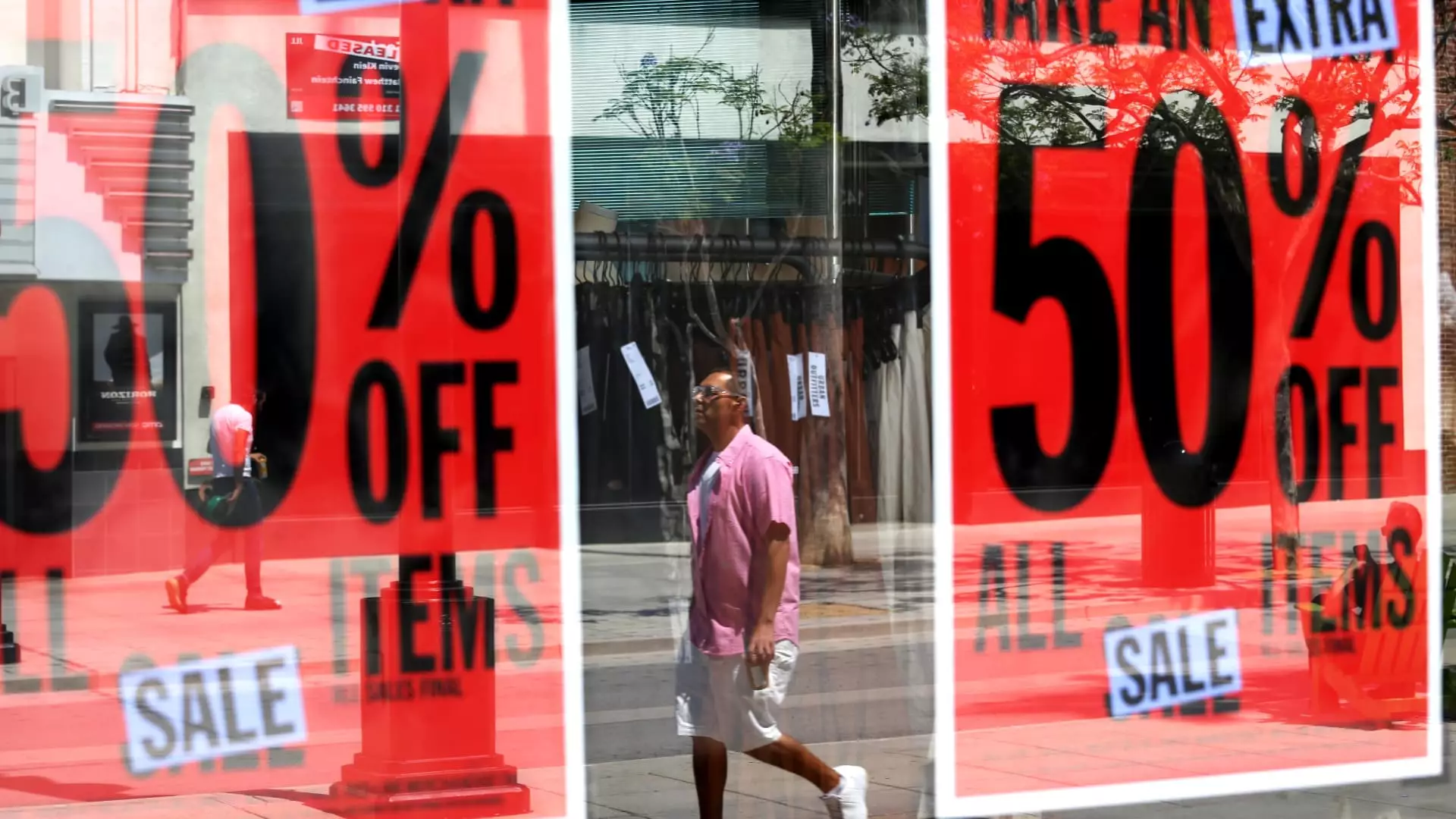In an era defined by rapid changes in the global economy, President Donald Trump’s trade war has emerged as a double-edged sword for retailers. On one hand, businesses find themselves grappling with unpredictable tariffs that create uncertainty and raise costs. On the other, they see an opportunity to manipulate this uncertainty into a clever marketing strategy aimed at urging consumers to purchase products before prices inevitably climb. While this tactic might seem savvy at first glance, it reveals a deeper issue: consumers are bracing themselves for the fallout of these tariffs, leading to declining confidence and spending.
The recent wave of marketing campaigns featuring tariff-related messaging demonstrates a moment of panic within the retail sector. Companies from Bare Necessities to Fashion Nova are strategically presenting these tariffs to spark urgency among shoppers. This countdown to potential price increases cultivates fear and scarcity—potent psychological tools in consumer behavior. But let’s not pretend this is a two-way street; the retailers are not merely responding to consumer needs; they’re exploiting a constructed crisis to boost short-term sales at the risk of their brand’s long-term integrity.
Retailers Struggle to Adapt Amid Chaos
The retail landscape is shifting rapidly, and companies that traditionally relied on stable pricing structures are now operating in reaction mode. With trade policies that change overnight, retailers face a crisis that renders solid financial planning nearly impossible. According to experts, the retail industry is not just facing a temporary hiccup; it’s teetering on the brink of an existential crisis. For smaller brands, the implications are particularly severe. With limited supply chain options compared to retail titans like Walmart, these smaller players may enter a state of survival mode.
The psychological strain on these retailers can lead to impulsive decisions that underscore their desperation. Some have opted for “pre-tariff” sales, marketing products at reduced prices and urging consumers to “stock up.” But this only scratches the surface of a larger issue: coerced consumerism born from fear. The rapid-fire promotions may be misleading, suggesting that immediate purchases are the only way to guard against impending doom. This strategy may lead to quick cash flow relief, but it could undermine the trust and relationship retailers have fostered with customers over the years.
Humor: A Mask for Desperation
In an interesting twist, some brands are adopting humor as a coping mechanism when addressing their price challenges. Companies like Beis openly acknowledge the absurdity of the situation, using wit to convey their lack of control over the evolving tariff landscape. By communicating with humor, they inject a blithe spirit into a grim conversation about rising costs and potential losses. However, this approach raises questions about authenticity. Should consumers be laughing when the reality is that they face rising costs and uncertainty?
While humor may help diffuse political tensions associated with tariffs, it can also trivialize the seriousness of the economic implications. By deflecting the urgency of the situation with amusing narratives, brands might deflect consumer character, damaging their credibility in the process. Moreover, the underlying tension between consumer sentiment and economic policy remains unchanged. How long will shoppers find it engaging or acceptable that their purchasing decisions are being leveraged in such a precarious environment?
A Precarious Future for Retail
With looming economic threats looming over them, companies must navigate a treacherous path that often conflicts with ethical consumerism. As consumers become increasingly aware of the broader implications of these tariffs, brands must reassess their strategies. Unsustainable gimmicks like pre-tariff sales or humorous communiqués might offer fleeting relief, but they do not build a resilient brand. Zigzagging through a landscape of economic volatility without transparency and authentic connection to customers can easily backfire.
Economic forecasts indicate that consumer spending is likely to decrease. As hesitant shoppers pull back, the strategies employed today, whether they lean on urgency or humor, could lead to long-term repercussions for retailers not prepared to establish trust. The reckoning could be harsh for brands that have failed to foster genuine consumer loyalty. The fear tactic of “buy now or miss out” could become a hollow slogan when consumers finally recognize the charade—turning spending into a conditioned reflex rather than an informed choice.
Retailers have an opportunity: rather than rely on fear or manipulate consumer’s anxieties, they could build real connections that outlast the tariff fluctuations. It’s time for the retail industry to wake up to the realities of consumer power and prioritize authenticity over momentary gains. The real question remains: will they seize this moment or let it fade into the inadequacies of economic policy?

